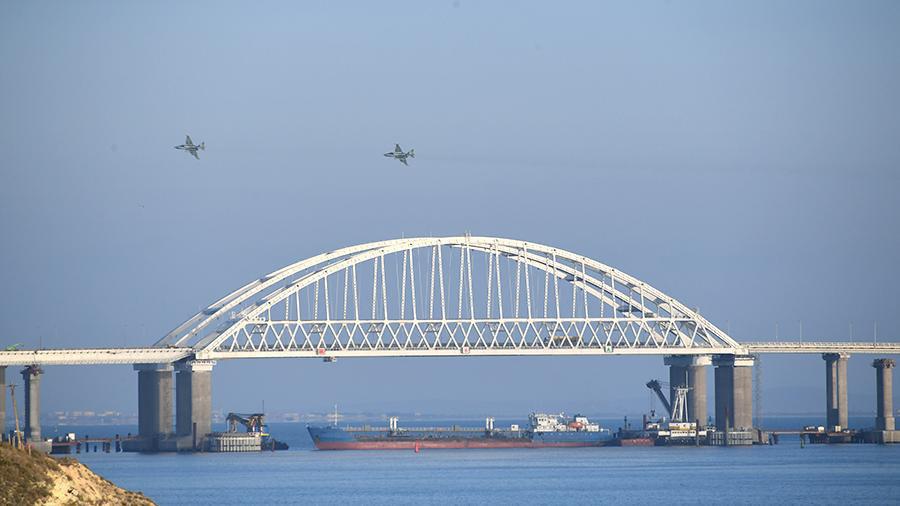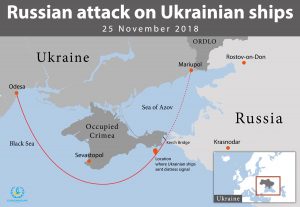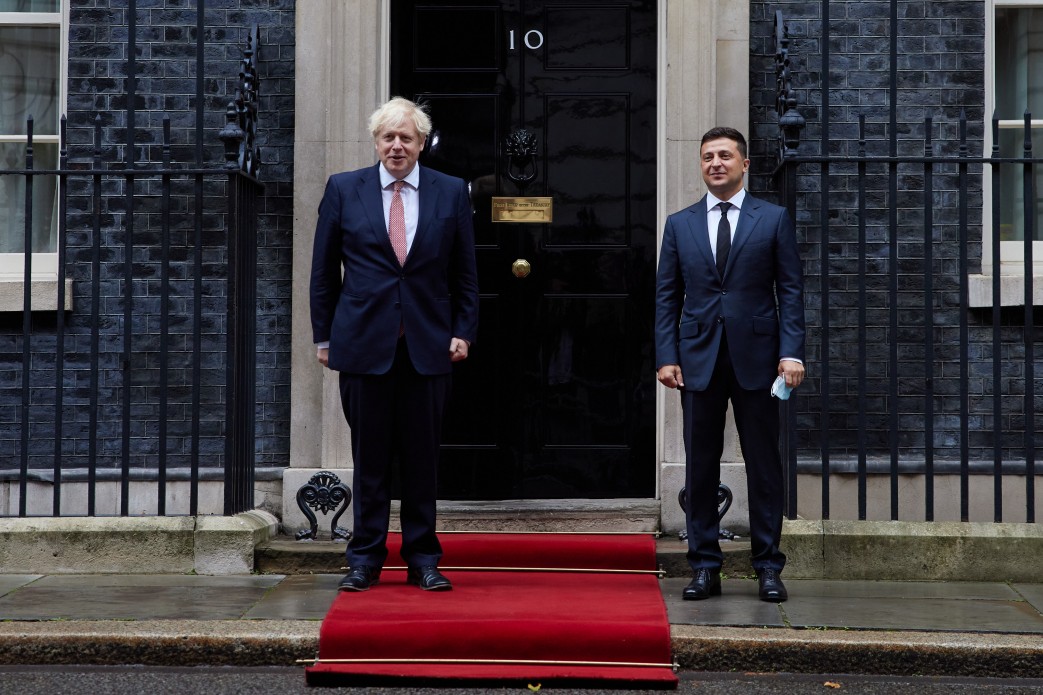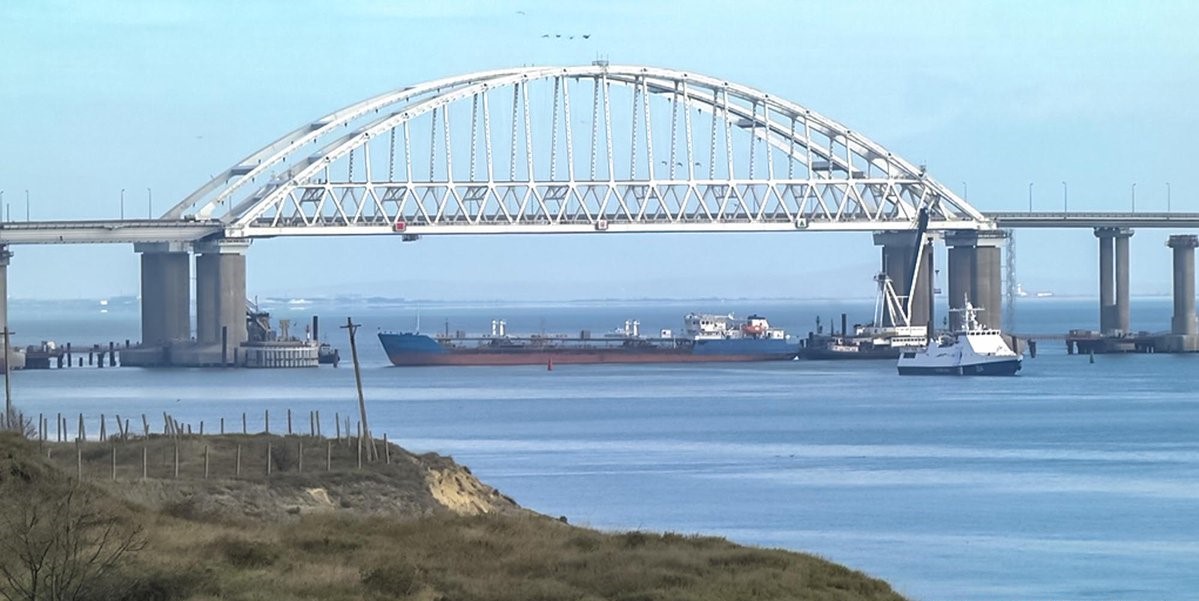Read also: Russian attack on Ukrainian ships near Kerch Strait – full chronology
On its YouTube channel, the SBU shared the corresponding records presented by SBU Deputy Head Oleh Frolov at the briefing.
SBU operatives "used technical means to access the talks of the crews of the Russian Su-30 jet and the Ka-52 helicopter with their command center," Frolov reported.
"These talks leave no doubt that the Russian military command deliberately ordered the use of weapons against Ukrainian ships," said Oleh Frolov.
The recorded radio communication between a pilot of Russian Sukhoi Su-30SM fighter jet (call sign "509th"), a controller (call sign "Jumper"), and a Russian Navy ship (call sign "Mantilla") happened on 25 November from 18:43 until 20:36.
The controller provides the Su-30 pilot with the coordinates of the area where a Ukrainian ship is located, and "Mantilla" later gives the "coordinates of the target."
"The work is done, using practically two [rockets]," reports "509th."
https://www.youtube.com/watch?v=sE_Nxj9VVc8
The helicopter pilots (call signs "9-47" and "9-49") received the coordinates also within the period from 19:12 to 21:42. They were first told: "Enter within the weapons range, don't use weapons until further advised," later the instructions were changed.
"9-47" reports four vessels spotted, two sitting and the other two moving toward them.
No order to use weapons is heard in the record, but it becomes clear by the reporting of the "expenditure of karandashi" ("pencils," a military slang word for unguided missiles) - the 47th had none, the 49th shot away two.
The record ends at the question of the controller to the "9-47" helicopter pilot on how many "karandashi" they have left.
"This communication between the crews of the Su-30 jet and Ka-52 helicopters disclosed using weapons against Ukrainian Navy ships. The conversations clearly point to the usage of two 'pencils' as by Su-30, as by a Ka-52," Frolov explained to journalists.
According to him, the aircraft purposefully used the weapons and returned to their places of permanent deployment.
"These talks leave no doubt that the Russian military command deliberately ordered the use of weapons against Ukrainian ships," Oleh Frolov emphasized.
As reported earlier, during the attack on Ukrainian vessels in neutral waters near the annexed Crimea, Russian military and border guards fired for effect on Ukrainian Navy crews.
The invaders took captive 24 Ukrainian servicemen.
We have asked Andras Racz, security analyst at the Hungarian policy think tank Political Capital, to comment on whether it was possible for the jet and helicopter to have fired upon the ships without destroying them. According to Mr. Racz,
"It is perfectly possible. [...] most probably, the Russian air units did not intend to actually destroy the Ukrainian ships and kill all the crews.
Had they intended to sink them, they would have fired a lot more missiles, and possible even used gunfire, particularly from the helicopter.
However, they fired altogether only four unguided missiles (two missiles from the Su-30, and another two from the helicopter.)
The radio transcript seems to support this assumption.
According to the radio transcripts, at 19:57 the Su-30 requested to be the first one to do the job, while it was still 24 kilometers from the target.
At 20:05 the Su-30 already reported that after firing two missiles, its job was done and it was already returning to the northern point.
Had the Su-30's job been to destroy the Ukrainian ships, most probably it would have at least double-checked the results of its fire (thus would have realized that no, ships were not destroyed and were still afloat), hence probably would have fired a lot more than only two missiles.
Hence, for me, the transcript indicates that the Su-30's mission was probably to fire live missiles as warning shots at the Ukrainian ships in order to stop them (damaging them a bit is not a problem), but not to destroy them. This would explain, why the altogether four missiles did not cause too much damage: they were not intended to do so."
SBU reported that the three Ukrainian vessels and their crews - tugboat "Yany Kapu" and armored artillery cutters "Berdiansk" and "Nikopol" - came under six types of Russian attacks:
- The Russian FSB border administration's ship "Don" rammed small tugboat "Yany Kapu." (Bellingcat found that "Ukrainian tug ‘Yany Kapu’ was intentionally rammed at least four times over a period of at least an hour.")
- The Russian SU-30 fighter jet fired two missiles against Ukrainian ships
- K-52 helicopter launched two more rockets.
- Ship-based large-caliber naval artillery armament was used.
- Later Russian special forces assaulted the vessels and used physical violence against Ukrainian sailors.
- "The sixth type of violence is still on - physical, moral and psychological pressure and illegal arrest of 24 servicemen," says SBU.
“The fire targeted exactly the cockpit where Ukrainian sailors were located," stressed Oleg Frolov.
Read more on the 25 November Russian attack on Ukrainian military boats and its consequences:
- Putin has crossed a Rubicon – Will the West respond?
- FSB tries to explain attack on Ukrainian ships, proves Russia broke its own laws
- Russian attack on Ukrainian ships: who has a right to do what in the Azov Sea
- Condemnation and “concerns”: world reaction to Russia’s attack on Ukrainian ships
- Russian wave of disinformation from the Azov Sea
- Putin will attempt to divert attention from Russia’s attack on Ukraine in Kerch Strait, Polyakov says
- Russia takes 24 prisoners of war after attacking Ukrainian ships in Azov, televises “confessions”
- Martial law to be imposed in nearly half of Ukraine. Here is what will change
- Russian military leadership ordered escalation in Black Sea, Ukrainian army intercepts show
- Russia attacks Ukrainian ships near Kerch strait – video, audio intercepts
- Russian attack on Ukrainian ships near Kerch Strait – full chronology
Read more on the earlier developments in the Sea of Azov:
- Ukrainian warships break Russian de-facto blockade in Azov Sea to create naval base
- Crimea’s growing water problem might provoke new Russian attack against Ukraine
- Occupied Crimea is running out of water
- Gaps in geography: Russia thinks Black Sea not European, Duma vice-speaker sees Azov Sea inland Russia’s
- Moscow boosting tensions in Sea of Azov but can’t change strategic situation there
- Moscow seeking to provoke revolts in Ukraine’s Azov Sea ports
- Ukraine has law but not force on its side in Sea of Azov
- Ukraine has law but not force on its side in Sea of Azov
- How Putin’s Crimean bridge grew over 2016-2017 – satellite images
- Scandal as Dutch companies help build bridge to occupied Crimea
- How much will Crimea cost Russians?
- Russia positioning to attack Ukraine from Sea of Azov






